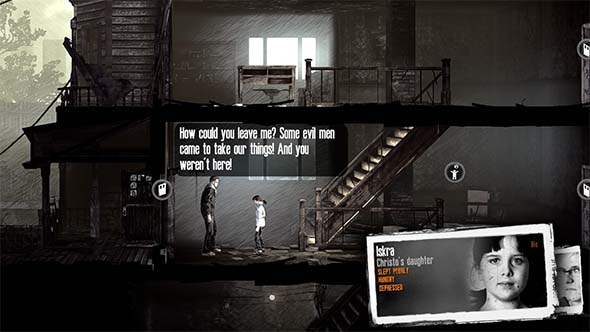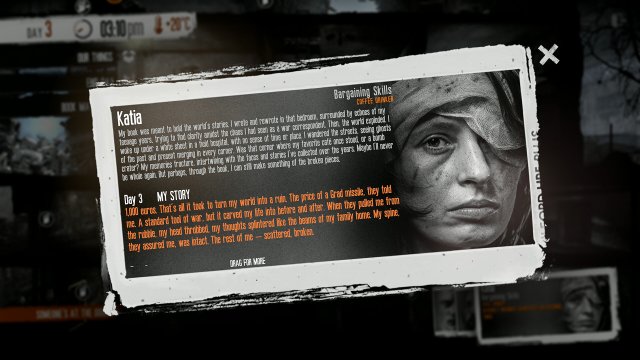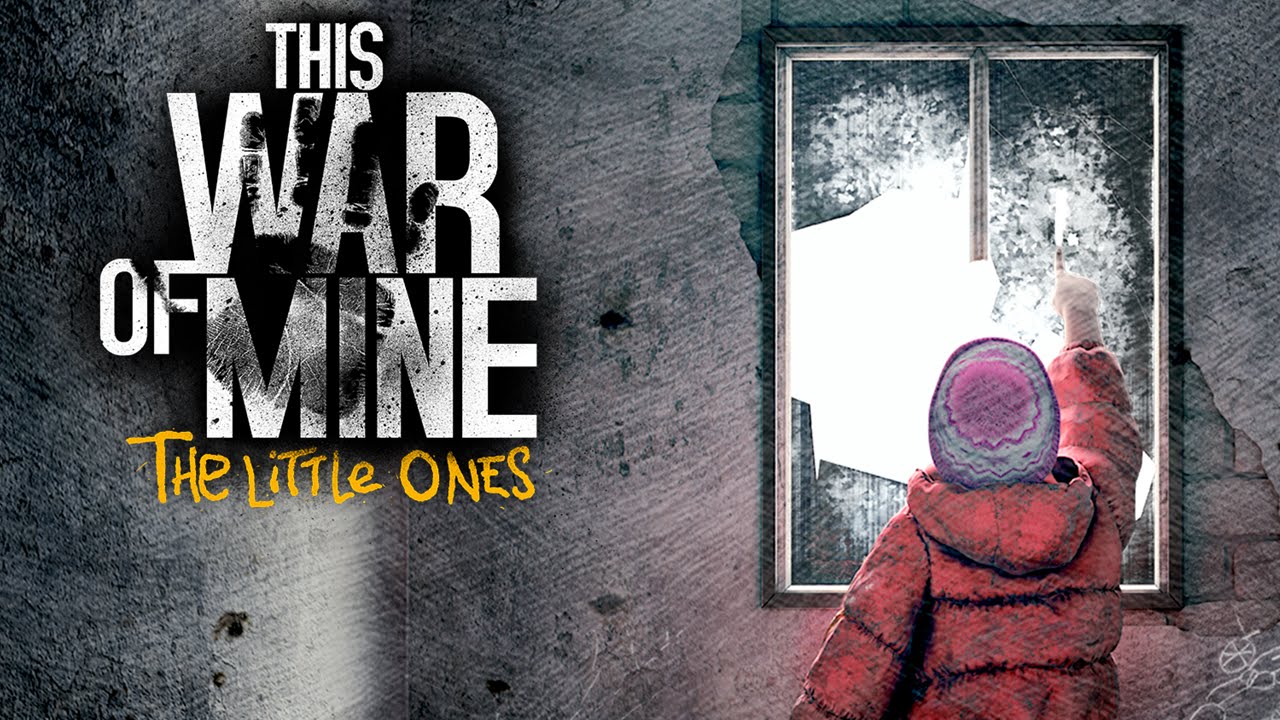The “Children” DLC for This War of Mine, also known as The Little Ones, significantly transforms the gameplay experience by adding children as playable characters. This expansion not only introduces new mechanics but also enhances the emotional depth and complexity inherent in the survival narrative. Below is a detailed examination of the key features and their implications on gameplay dynamics.
Introduction of Children Characters
Initial Role
Children initially play a non-contributory role within the game dynamics. They necessitate additional care and resources, which can challenge the player’s survival efforts. Unlike adult characters, children cannot engage in essential tasks such as crafting, nighttime scavenging, or guarding the shelter, which are crucial for sustaining the group’s survival during conflicts. This limitation emphasizes the need for meticulous resource management and strategic planning to ensure their well-being while balancing the survival of adult characters.
Teaching and Learning Mechanism
A notable feature of this DLC is the ability of adults to teach children various skills. Through an intuitive teaching mechanism, children can learn to undertake certain tasks, including cooking and utilizing water filters or traps. Once they acquire these skills, they can contribute effectively without consuming additional resources, which provides a glimmer of hope and functionality in an otherwise resource-strapped environment.
Impact on Resource Management
Resource Burden
The inclusion of children adds a new dimension to resource management. Children require consistent access to food, water, and potentially medical supplies, which can strain an already limited resource pool. Players must prioritize the acquisition and allocation of these essentials, carefully balancing their provisions to ensure both adult and child survival.
Emotional Needs
In addition to physical needs, children also have emotional requirements that manifest in the form of interaction and engagement. Players must invest time to emotionally nurture the children to prevent issues such as depression or behavioral problems. This adds an intriguing layer of complexity, as emotional health is now a crucial component of overall group stability.
Gameplay Dynamics
Day-Night Cycle
The game’s day-night cycle plays a significant role in how players manage their characters. During the day, children can contribute by performing learned skills, thereby augmenting the functionality of the shelter. However, their inability to partake in nighttime scavenging necessitates careful planning during the day to stock up on resources, creating a strategic layer to the game’s survival aspects.
Shelter Management
Children can bond with adults, which impacts shelter dynamics positively. Stronger relationships between characters can reduce the need for separate sleeping arrangements, thus cutting down on resource expenditure. However, it is important to recognize that children do not bolster defensive efforts during raids, necessitating players to rely on adults for security.
Overall Impact on Gameplay
Increased Complexity and Depth
The Little Ones DLC amplifies the game’s complexity by introducing a range of new management tasks centered around child care and development. Players are forced to navigate the delicate balance between survival necessities and emotional well-being—where emotional neglect can lead to far-reaching consequences in gameplay.
Narrative and Emotional Depth
The narrative experience is markedly enriched through the introduction of children. Players are compelled to reflect on moral choices and the implications of their survival tactics on the lives of the younger characters. This emotional resonance elevates the gameplay, allowing for a more personal connection to the characters and the overarching struggle for survival.
Conclusion
Overall, The Little Ones DLC significantly enhances This War of Mine by introducing children as a playable element, demanding a more sophisticated approach to resource management, emotional engagement, and strategic planning. Players must now navigate not only the physical survival challenges but also the emotional complexities that come with caring for children in a war-torn world, ultimately creating a richer and more profound gaming experience.






Leave a Reply